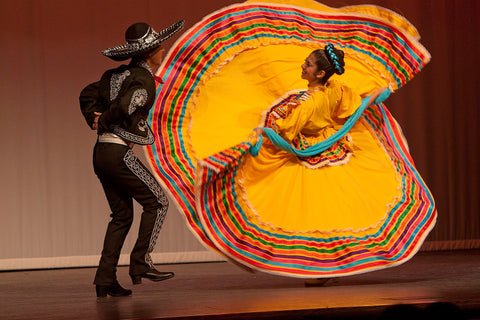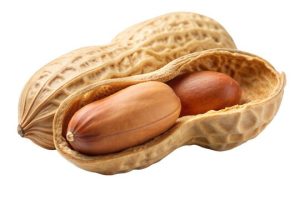Exploring The Beauty Of Mexican Dances

Mexican dances are a vibrant tapestry of tradition and celebration. From the spirited footwork of the Jarabe Tapatío to the mesmerizing movements of the Danza de los Viejitos, each dance tells a story of Mexico’s rich culture. With colorful costumes and rhythmic music, Mexican dances captivate both performers and spectators alike. Join us on a journey through the lively world of Mexican dances, where every step embodies the passion and history of this captivating art form.
The Vibrant World of Mexican Dances: A Colorful Celebration of Culture
Welcome to the lively and enchanting world of Mexican dances! Mexico is a country rich in culture and tradition, and its diverse dances reflect the vibrant spirit and history of its people. In this article, we will delve into the colorful tapestry of Mexican dances, exploring the stories behind them, the intricate footwork, and the joyous celebrations that accompany each dance.
The History and Significance of Mexican Dances
For centuries, dance has played a central role in Mexican culture, serving as a way to celebrate religious festivals, mark important milestones, and honor the country’s indigenous heritage. Mexican dances are a blend of indigenous, European, and African influences, creating a unique and dynamic art form.
The Influence of Indigenous Cultures
Many Mexican dances are rooted in ancient indigenous traditions that have been passed down through generations. These dances often tell stories of nature, harvests, and mythical creatures, connecting the dancers to their ancestors and the land.
One of the most iconic indigenous dances is the Danza de los Voladores (Dance of the Flyers), which originated with the Totonac people of Veracruz. In this breathtaking dance, five performers climb a tall pole and, tied by ropes, spin down to the ground, symbolizing the cycle of life and the connection between earth and sky.
The Influence of European and African Cultures
With the arrival of Spanish colonizers in the 16th century, European dance styles were introduced to Mexico, blending with indigenous traditions to create new forms of dance. The Jarabe Tapatío, also known as the Mexican Hat Dance, is a perfect example of this cultural fusion. This lively and flirtatious dance combines Spanish zapateado footwork with indigenous rhythms, showcasing the beauty and complexity of Mexican dance.
African influences can also be seen in dances like the Danza de los Diablos (Dance of the Devils), which originated in the state of Guerrero. This energetic and colorful dance features performers in elaborate devil costumes, moving to the beat of drums and celebrating the struggle between good and evil.
The Variety of Mexican Dances
From the exuberant movements of folkloric dances to the precise footwork of traditional ballet, Mexican dances come in a dazzling array of styles and forms. Each region of Mexico has its own unique dances, costumes, and music, showcasing the country’s cultural diversity.
Folkloric Dances
Folkloric dances are a celebration of Mexican heritage, with each dance reflecting the history and traditions of a specific region. Colorful costumes, intricate footwork, and lively music are hallmarks of folkloric dances, which are often performed at festivals, weddings, and other special events.
One of the most famous folkloric dances is the Danza de los Viejitos (Dance of the Little Old Men) from the state of Michoacán. Dancers wear masks and costumes that mimic elderly men, shuffling and spinning with humor and agility, symbolizing the cycle of life and the wisdom of age.
Ballet Folklórico
Ballet Folklórico is a popular dance style that combines elements of traditional Mexican dances with classical ballet techniques. Performers, often dressed in elaborate costumes, showcase the beauty and grace of Mexican dance through intricate choreography and storytelling.
The Danza del Venado (Deer Dance) is a classic example of Ballet Folklórico, originating from the Yaqui indigenous people of Sonora. Dancers portray the hunting of a deer, moving with strength and agility while wearing stunning deer costumes and headdresses.
Celebrating Mexican Dances Today
Today, Mexican dances continue to thrive as a vibrant and essential part of the country’s cultural identity. From the bustling streets of Mexico City to the quiet villages of Oaxaca, dance is a universal language that brings people together and keeps traditions alive.
Through performances, workshops, and festivals, Mexican dancers of all ages and backgrounds share their passion for dance with the world, preserving the legacy of their ancestors and inspiring future generations to keep the spirit of Mexican dance alive.
So, the next time you hear the rhythmic sounds of Mexican music or see the colorful swirl of a traditional costume, take a moment to appreciate the beauty and richness of Mexican dances. From ancient rituals to modern interpretations, Mexican dances are a living testament to the power of culture, community, and creativity.
Join the dance, feel the music, and let the spirit of Mexico sweep you off your feet into a world of joy, tradition, and endless celebration!
Mexican🇲🇽Dance #shorts #dancer #mexicano
Frequently Asked Questions
What are some popular Mexican dances?
Some popular Mexican dances include the traditional folkloric dances like Jarabe Tapatío (Mexican Hat Dance), Danzón, and Cumbia, as well as more contemporary dances like Salsa and Bachata, which have been embraced in Mexico.
How are Mexican dances significant in Mexican culture?
Mexican dances play a vital role in showcasing the diversity and richness of Mexican culture. They often symbolize historical events, religious practices, and even social norms, serving as a way to celebrate and preserve the country’s heritage.
What are the key elements of Mexican dance costumes?
Typical Mexican dance costumes include vibrant colors, intricate designs, and flowing skirts or dresses for women, and charro suits or traditional embroidered clothing for men. Accessories like sombreros, shawls, and fans are also commonly used to enhance the visual appeal of the dances.
Final Thoughts
Mexican dances showcase a rich cultural heritage, reflecting a blend of indigenous and European influences. These vibrant and energetic performances captivate audiences worldwide, celebrating Mexico’s diverse traditions and history. From the graceful movements of ballet folklórico to the lively rhythms of salsa and cumbia, Mexican dances continue to enchant and inspire. Embracing themes of love, joy, and community, these dances convey the spirit and soul of Mexico through music and movement. Experience the colorful tapestry of Mexican culture through the dynamic art of Mexican dances.





